In the world of sustainable gardening, micro clover has emerged as a star. Compact, green, and resilient, it promises to transform lawns and gardens. But a burning question lingers: does micro clover grow in the shade? If you’ve wrestled with patchy, sun-deprived spots in your yard, you know the struggle.
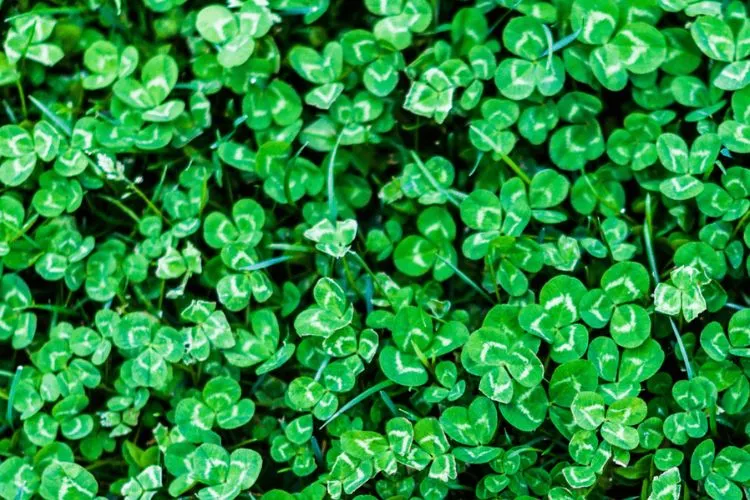
Many have found hope in micro clover, only to be left wondering about its true shade tolerance. This article aims to shed light on this very topic. Understanding micro clover’s affinity (or lack thereof) for the shade can be a game-changer for garden enthusiasts.
Whether you’re looking to fill those tricky shaded patches or simply seeking to expand your gardening knowledge, we’ve got you covered. Dive in as we unravel the mysteries of micro clover and its relationship with the shade.
Table of Contents
Does Micro Clover Grow in the Shade? Discussing the Tolerance Level
Yes, Micro Clover can grow in various lighting conditions, including shaded areas. While it ideally prefers full sun, it can adapt to partial shade and still perform well. Micro Clover’s ability to fix nitrogen from the air helps it thrive in less-than-optimal light conditions, leading to a hardy and healthy ground cover. However, in heavily shaded areas, the growth might be less dense and slower.
It’s recommended to ensure at least few hours of sunlight for optimal growth. Overall, Micro Clover is a versatile, low-maintenance choice for lawns and gardens.
Micro clover’s natural habitat
Originating from Europe and Western Asia, micro clover traditionally thrived in meadows, grasslands, and other open spaces that received a mix of sunlight and shade.
This natural habitat gave it the versatility to endure both sunny and partially shaded conditions, making it more adaptable than some of its botanical peers.
Factors influencing its shade tolerance
Shade tolerance isn’t a one-size-fits-all trait. For micro clover, several factors come into play. The health of the soil, for instance, can greatly influence how well the plant thrives in the shade. Rich, well-draining soil can bolster its resilience.
Additionally, the intensity and duration of shade are crucial. While micro clover can handle partial shade admirably, deep, persistent shade might challenge its limits.
How micro clover adapts to low light conditions
Nature has its ways of adaptation, and so does micro clover. In low light, it tends to sprawl out more, seeking sunlight wherever possible. The leaves might also grow slightly larger to capture as much light as they can for photosynthesis.
While it might not grow as densely in heavily shaded areas, its inherent resilience allows it to survive and even flourish, albeit with some adjustments in its growth patterns.
Ideal Light Conditions for Micro Clover
Every plant has its sweet spot when it comes to light, and for micro clover, understanding this balance can make all the difference in achieving a lush green carpet.
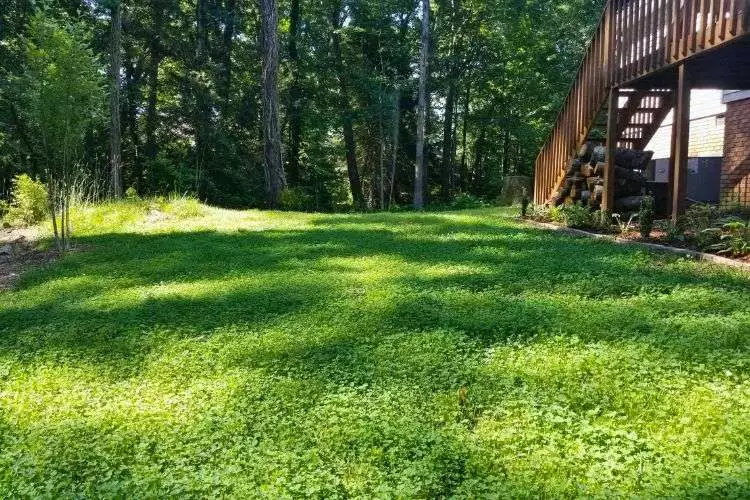
Micro clover’s preferred light exposure
Micro clover, by nature, thrives best under full sun to partial shade. This means it loves a good 4 to 6 hours of direct sunlight, but it’s also forgiving enough to accommodate periods of shade. It’s this adaptability that makes it a darling among gardeners.
Partial shade vs. full shade
Let’s clear the air. Partial shade refers to areas that receive direct sunlight for only a portion of the day, perhaps shadowed by structures or other plants during peak sun hours.
Full shade, on the other hand, means the area rarely, if ever, sees direct sunlight. While micro clover can manage in partial shade quite well, it might struggle to maintain its dense, vibrant appearance in full shade conditions.
The impact of tree canopies on micro clover growth
Tree canopies can be a double-edged sword. While they offer respite from the scorching sun, a dense canopy can limit the sunlight reaching the micro clover below.
However, if the canopy is moderately dense, allowing dappled sunlight through, it can create an ideal environment for the clover to flourish, protected from extreme conditions while receiving the light it craves.
Understanding Micro Clover
Micro clover is more than just a buzzword in the gardening world—it’s a revolution for those looking to create sustainable green spaces. But what exactly is it?
What is a micro clover?
Micro clover, scientifically known as Trifolium repens, is a dwarf variety of the white clover. Unlike its bigger counterparts, it boasts tiny leaves and a low-growing habit, often not exceeding 4-6 inches (10-15 cm) in height. Its compact size coupled with its rich, green hue makes it an attractive choice for various landscaping purposes.
Common uses of micro clover
Often used as a ground cover, micro clover is a favorite among those aiming for a “no-mow” lawn. It can be either used alone or mixed with grass seeds to create a lush, green carpet.
Additionally, its ability to fix nitrogen from the atmosphere aids in enriching the soil, making it a great companion for other plants in gardens and flowerbeds.
Advantages of micro clover in lawns and gardens
Micro clover comes packed with benefits. It’s drought-resistant, meaning less watering, and its dense growth suppresses weeds, reducing the need for chemical herbicides.
Furthermore, as a natural fertilizer, it promotes the health of surrounding plants, resulting in vibrant, thriving gardens without the added effort.
You may also find useful: Can Honeysuckle Grow In Pots? | Why Does Nothing Grow Under Pine Trees?
The Role of Sunlight in Plant Growth
Sunlight, the very lifeblood of our verdant planet. For plants, it’s not just about the warm embrace of the sun but the energy it provides.
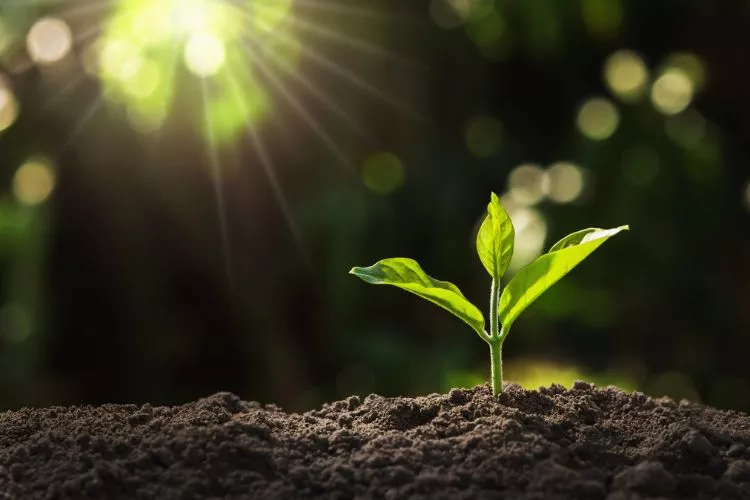
Importance of sunlight for plants
Just as we humans need food for energy, plants rely on sunlight. This radiant energy serves as the driving force for a plant’s growth, health, and reproduction. Without sufficient sunlight, plants can’t thrive, leading to stunted growth, pale leaves, and limited flowering.
Photosynthesis and its significance
The magic happens through photosynthesis. In this process, plants capture sunlight using chlorophyll (the pigment that gives plants their green color) and convert it into chemical energy.
This energy then combines carbon dioxide from the air with water from the soil to produce glucose, a type of sugar. Glucose fuels plant cells, allowing them to grow and reproduce. Simply put, without photosynthesis, there’s no life for plants.
Different light requirements for various plants
Different strokes for different folks—or in this case, different lights for different plants. While some plants, like cacti, thrive in direct sunlight, others, such as ferns, prefer the cool, indirect light of shaded forests.
Recognizing the unique light needs of each plant type is key to ensuring their optimal growth and health.
Planting Micro Clover in Shaded Areas
While micro clover’s versatility is a boon, planting it in shaded areas requires a special touch. A thoughtful approach ensures it grows robustly, even when the sun plays coy.
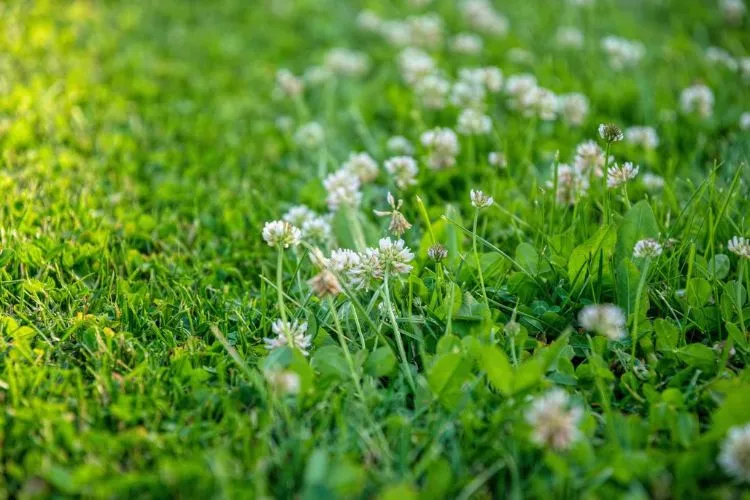
Selecting the right location
Picking the ideal spot is crucial. For shaded areas, aim for places that receive filtered or dappled sunlight. Beneath trees with sparse canopies or next to structures that allow some sunlight through during the day are often prime spots.
Avoid areas of deep shade where sunlight barely penetrates, as this might be too challenging for the micro clover to establish well.
Preparing the soil for micro clover
Even in shade, soil health is paramount. Start by testing the soil’s pH; micro clover prefers slightly acidic to neutral soil (pH 6-7). Enrich it with organic compost to ensure good drainage while retaining moisture.
Loosen the soil to a depth of 4-6 inches (10-15 cm) to allow roots to penetrate easily.
Seeding and caring for micro clover in shaded areas
When seeding, scatter the seeds evenly, ensuring good soil contact. Water them gently but thoroughly. In shaded areas, monitor the moisture level, as these spots might retain water longer.
Mulch lightly to preserve moisture and deter weeds. Even in the shade, occasional watering and a watchful eye for pests or diseases will ensure your micro clover thrives.
Tips for Successful Micro Clover Growth in Shade
Ah, the allure of a green carpet underfoot, even in the dappled, mysterious corners of a garden! While micro clover is already an adaptable gem, navigating the challenges of shade requires some finesse.
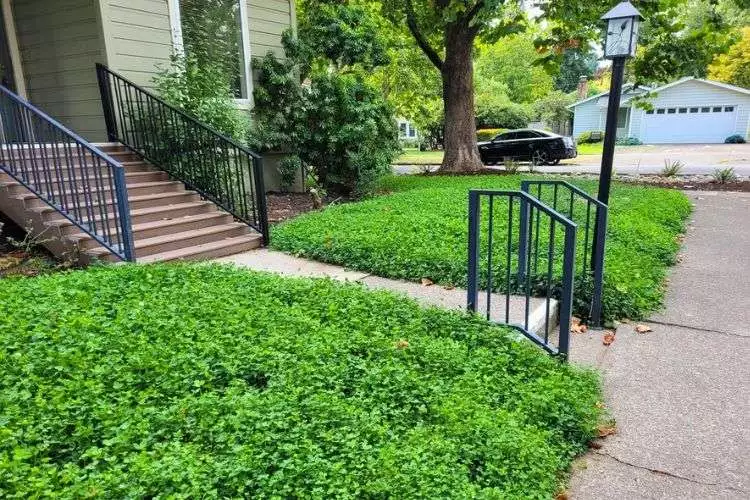
As we delve into these tips, we’ll unravel the secrets to optimizing micro clover’s growth, even when sunlight is but a teasing presence. Let’s dig in!
Proper watering techniques
Water is the elixir of life for plants, but like all good things, moderation is key. For micro clover in shaded areas, the dance between too much and too little becomes even more intricate.
- Frequency: Shaded areas naturally retain more moisture due to reduced evaporation. It’s advisable to water less frequently, allowing the soil to dry out slightly between watering sessions.
- Amount: When you do water, ensure that it’s deep enough to encourage the roots to grow downwards, seeking moisture. About an inch (2.5 cm) of water weekly, including rainfall, should suffice.
- Time: Morning is the best time to water. This allows the leaves to dry out during the day, reducing the risk of fungal diseases that thrive in cool, moist conditions.
- Method: Drip irrigation or a soaker hose is ideal. They deliver water directly to the roots, minimizing wastage and reducing moisture on the foliage.
Fertilization requirements
While micro clover is known to be a nitrogen-fixer, enriching the soil, shaded areas might require a little extra boost to compensate for lower light conditions.
- Type: A balanced, slow-release fertilizer with equal amounts of nitrogen, phosphorus, and potassium is typically best. Consider organic options like compost or well-rotted manure.
- Frequency: Micro clover doesn’t demand frequent feeding. Once at the onset of spring and possibly a light feeding in early summer should suffice.
- Application: Avoid applying fertilizer on wet foliage, as this can lead to burning. Using a broadcast spreader ensures even distribution.
- Caution: Always follow the manufacturer’s recommended dosage. Over-fertilizing can lead to excessive growth, making the plant more susceptible to diseases and pests.
Weed and pest management
Ah, the age-old adversaries in a gardener’s tale: weeds and pests. Even in shaded corners, these foes can rear their heads, but armed with knowledge, we can keep our micro clover pristine.
- Weed Control: One of micro clover’s strengths is its dense growth, which naturally suppresses weeds. However, in the early stages, hand-pulling any intruding weeds ensures they don’t overshadow your young clover.
- Natural Solutions: Introducing beneficial insects like ladybugs and praying mantises can help control pest populations. They act as natural predators, keeping aphids and other harmful bugs at bay.
- Organic Pesticides: If pests do become an issue, consider organic solutions like neem oil or insecticidal soaps. They’re effective yet gentle on the environment.
- Regular Inspections: Make it a habit to inspect your micro clover. Early detection of any pest infestation or disease can save a lot of headaches later on.
Mulching strategies
Mulching, the unsung hero in any garden, offers myriad benefits, especially in shaded realms where moisture retention and temperature control are pivotal.
- Types of Mulch: Organic mulches like straw, bark chips, or pine needles not only retain moisture but also slowly decompose, enriching the soil with vital nutrients.
- Thickness: Apply a layer of about 2-3 inches (5-7.5 cm) of mulch. This thickness ensures effective weed suppression without suffocating the soil.
- Breathability: Ensure the mulch allows the soil underneath to breathe. Avoid compacting it too densely.
- Edges: Leave a small gap around the base of large plants or trees. Direct contact can sometimes encourage pests or rot.
Frequently Asked Questions (fAQs)
Can micro clover grow in deep shade?
While micro clover tolerates partial shade, deep shade can be challenging. It prefers areas with dappled or filtered sunlight for optimal growth.
What are the signs of micro clover struggling with low light conditions?
Signs include yellowing leaves, elongated stems, reduced density, and slower growth, indicating a need for more light.
Are there specific micro clover varieties for shade?
Most micro clover varieties prefer some sunlight. However, no specific variety is bred solely for deep shade conditions.
How can I improve micro clover growth in shaded areas?
Ensure proper watering, fertilize moderately, manage weeds, and use mulching. Also, prune overhanging branches to increase light penetration.
Can micro clover be combined with other shade-tolerant plants?
Absolutely! Micro clover pairs well with shade-tolerant grasses and groundcovers, creating diverse, lush green carpets in shaded spots.
Conclusion
In our journey through micro clover’s world, we’ve unearthed its shade tolerance, optimal light conditions, and nurturing techniques in the shadowy realms. Its resilience and adaptability make it a gardener’s delight. We wholeheartedly encourage you to experiment, letting micro clover grace your garden’s shady corners.
Its versatility under varied light conditions is truly remarkable. We hope that this guide has been helpful. You can read about similar topics here on our website. Check back again soon for more.


